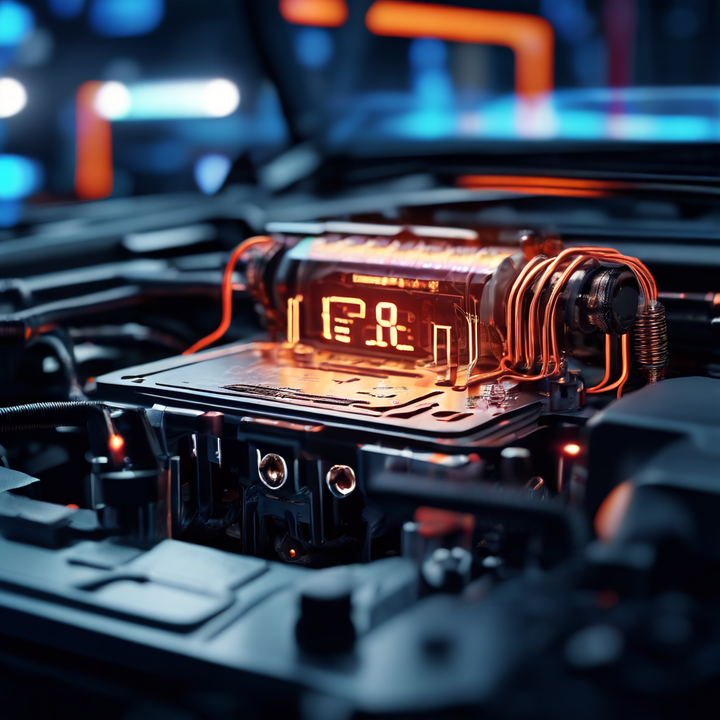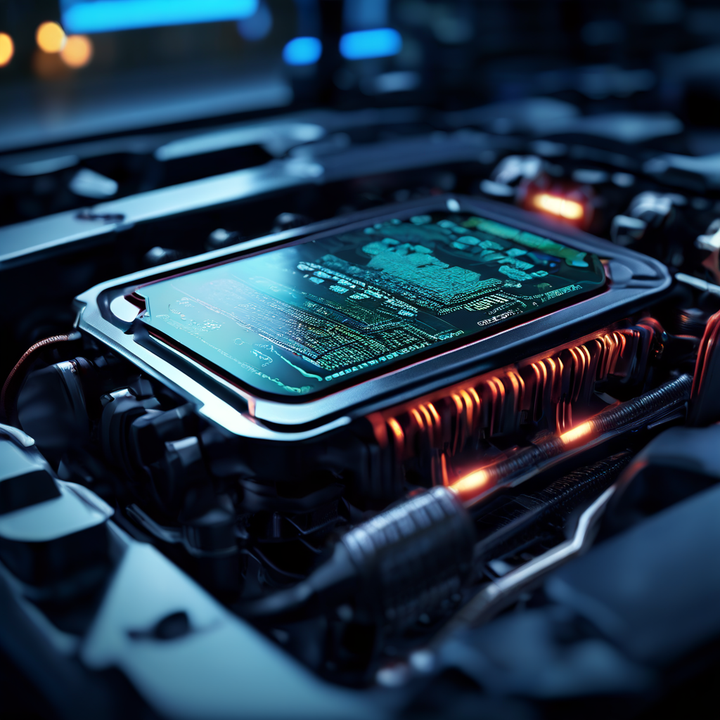


The diagnostic trouble code P03A3 indicates an issue with the cylinder 2 pressure sensor circuit on the vehicle. This code suggests that the pressure sensor for cylinder 2 is providing intermittent or erratic readings to the engine control module (ECM).
Before we delve into the details, let's first understand what this code actually means. The P03A3 code indicates that the engine control module (ECM) has detected an intermittent or erratic signal from the pressure sensor responsible for monitoring the combustion pressure in cylinder 2. This sensor, often integrated into the glow plug assembly, plays a crucial role in ensuring optimal engine performance and emissions control.
Over the years, I've encountered several common causes that can trigger this code. Here's a table summarizing the most frequent culprits:
| Cause | Description |
|---|---|
| Faulty Pressure Sensor/Glow Plug | The cylinder 2 pressure sensor or glow plug itself can wear out over time, leading to erratic readings or complete failure. |
| Wiring Issues | Open circuits, shorts to ground, or corroded electrical connectors in the pressure sensor circuit can cause intermittent or erratic signals. |
| Damaged Wiring Harness | Physical damage to the wiring harness can disrupt the signal from the pressure sensor. |
| ECM Fault | In some cases, the engine control module (ECM) itself may be faulty, causing issues with sensor readings. |
When faced with the P03A3 code, I follow a systematic diagnostic approach to pinpoint the root cause accurately. Here are the steps I typically take:
Visual Inspection:
Carefully inspect the wiring and connectors for any signs of damage, corrosion, or loose connections.
Voltage and Ground Check:
Use a multimeter to check for proper voltage supply and ground at the pressure sensor.
Live Data Monitoring:
Connect a scan tool and monitor the live pressure sensor data, looking for erratic readings or patterns that could indicate a faulty sensor.
Mechanical Checks:
Perform cylinder leak down and compression tests to rule out any mechanical issues that could be causing interference with the sensor readings.
Additional Trouble Code Check:
Check for any other trouble codes related to the ECM or other sensors that could be contributing to the problem.
Once the root cause has been identified, the repair process can begin. Here's a table outlining the typical repair procedures:
| Repair | Description |
|---|---|
| Sensor/Glow Plug Replacement | If the pressure sensor or glow plug assembly is faulty, replace it with a new one. |
| Wiring Repair/Replacement | Repair or replace any damaged wiring or connectors, ensuring all electrical connections are clean and tight. |
| ECM Reprogramming/Replacement | If the wiring is fine, the ECM may need to be reprogrammed or replaced entirely. |
To prevent the recurrence of this issue, I always emphasize the importance of following these preventive measures:
Follow recommended service intervals for glow plug replacement.
Inspect engine wiring periodically for any signs of damage.
Use high-quality fuel and engine oil to prevent excessive soot buildup, which can contribute to sensor issues over time.
Avoid excessive idling or short trip driving cycles, as these can accelerate component wear.
The cost of addressing the P03A3 code can vary significantly depending on the root cause and the specific vehicle make and model. Here's a table with typical cost ranges:
| Repair | Typical Cost Range |
|---|---|
| Pressure Sensor/Glow Plug Replacement | $100 - $300 (part and labor) |
| Wiring Repairs | $200 - $500 (labor-intensive) |
| ECM Reprogramming | $100 - $300 |
| ECM Replacement | $500 - $1,500 (or more) |
It's essential to have a trusted mechanic perform a thorough diagnosis to accurately assess the extent of the repairs needed and provide a reliable cost estimate. While the cost may seem daunting, addressing this issue promptly can prevent further damage and ensure optimal engine performance and fuel efficiency.
In addition to the common causes and diagnostic steps mentioned above, there are a few other factors that can contribute to or exacerbate the P03A3 code:
Engine Modifications: Any aftermarket modifications to the engine, such as performance chips or tuning, can potentially interfere with the pressure sensor readings and trigger the code.
Environmental Factors: Extreme temperatures, humidity, or altitude can affect the sensor's performance and potentially cause erratic readings.
Fuel Quality: Using low-quality or contaminated fuel can lead to increased soot buildup, which can clog or damage the pressure sensor over time.
It's important to consider these additional factors when diagnosing and addressing the P03A3 code, as they can provide valuable insights and help prevent future occurrences.
The P03A3 – Cylinder 2 Pressure Sensor Circuit Intermittent/Erratic code may seem like a daunting challenge, but with the right knowledge and diagnostic approach, it can be resolved effectively. As a mechanic, I've witnessed firsthand the importance of addressing this issue promptly to maintain the longevity and performance of your vehicle.
Remember, preventive maintenance and regular inspections are key to avoiding costly repairs down the line. If you ever encounter this code or any other automotive issue, don't hesitate to seek the expertise of a qualified mechanic. Together, we can keep your vehicle running smoothly and ensure a safe and enjoyable driving experience.
The cylinder pressure sensor monitors the combustion pressure inside the engine cylinder. It plays a crucial role in ensuring optimal engine performance and emissions control.
Yes, in some cases, a faulty engine control module (ECM) can cause issues with sensor readings, including the cylinder pressure sensor, leading to the P03A3 code.
You can visually inspect the wiring and connectors for any signs of damage, corrosion, or loose connections. Additionally, use a multimeter to check for proper voltage supply and ground at the pressure sensor.
Cylinder leak down and compression tests should be performed to rule out any mechanical issues that could be causing interference with the pressure sensor readings.
Yes, any aftermarket modifications to the engine, such as performance chips or tuning, can potentially interfere with the pressure sensor readings and trigger the P03A3 code.
It is recommended to follow the manufacturer's recommended service intervals for glow plug replacement to prevent issues like the P03A3 code.
Yes, using low-quality or contaminated fuel can lead to increased soot buildup, which can clog or damage the pressure sensor over time, potentially causing the P03A3 code.
The typical cost range for replacing the cylinder pressure sensor or glow plug assembly is $100 to $300, including parts and labor.
Yes, extreme temperatures, humidity, or altitude can affect the pressure sensor's performance and potentially cause erratic readings, leading to the P03A3 code.
Addressing the P03A3 code promptly is crucial to prevent further damage and ensure optimal engine performance, fuel efficiency, and emissions control.

Miguel started tinkering with car radios as a teenager, fascinated by the intricate dance of wires and circuits. This passion led him to pursue a career as an automotive electrician. For the past 10 years, Miguel has tackled everything from flickering headlights to mysterious electrical gremlins. He thrives on troubleshooting electrical problems and enjoys sharing his knowledge to empower car owners to understand their vehicles better.



